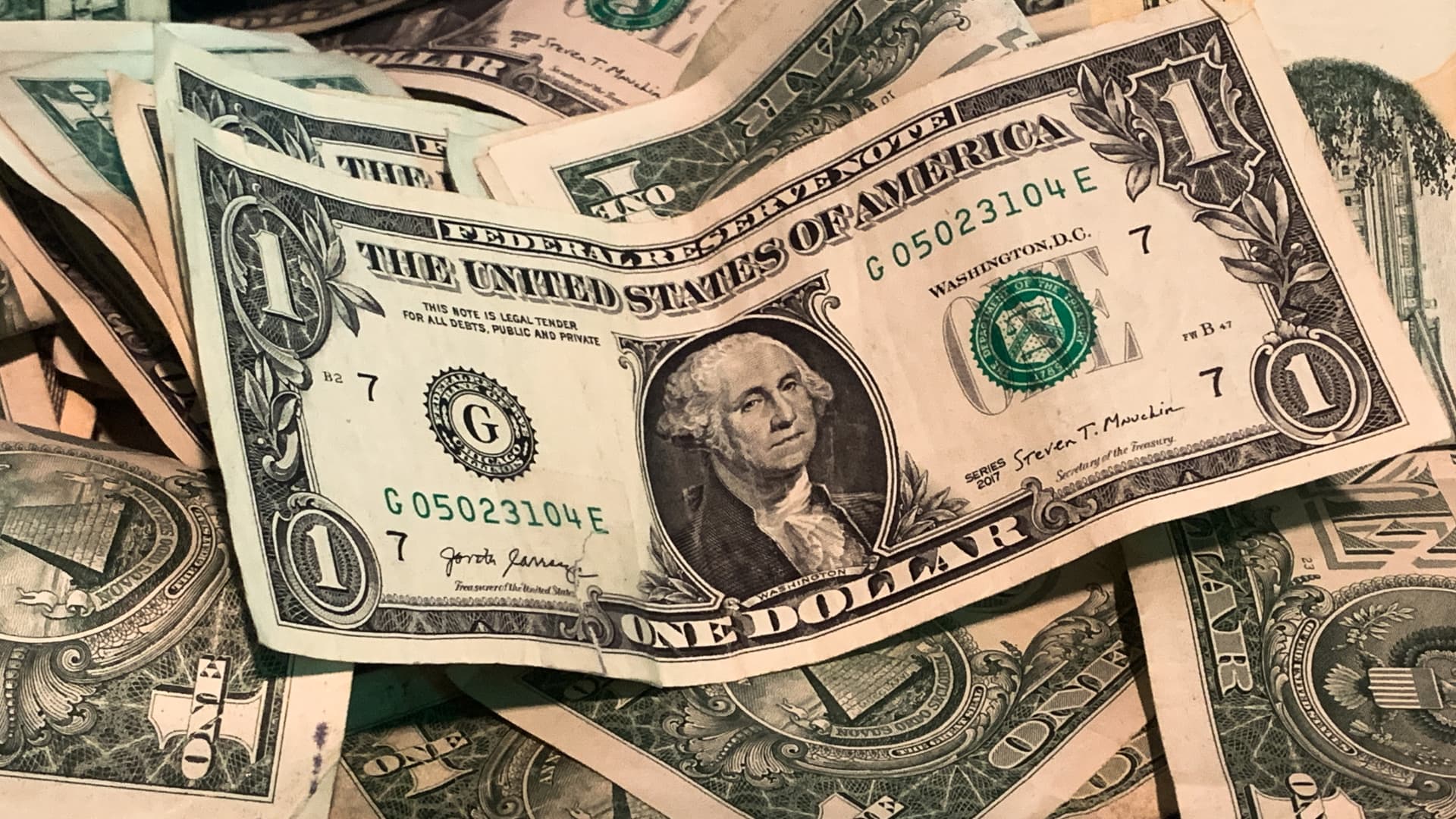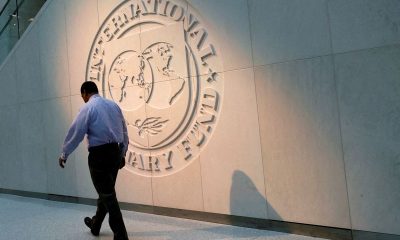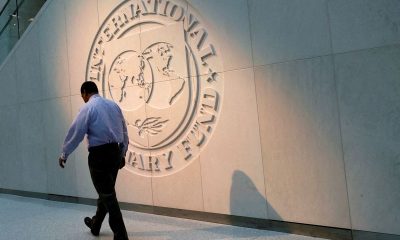Economy
Dollar stays soft after jump in US jobless claims; Fed in focus

The dollar on Friday held near the previous day’s two-week low against a basket of peers after a spike in weekly jobless claims raised hopes that a peak in U.S. rates was near, while the focus turned to the upcoming week packed with central bank meetings.
The number of Americans filing new claims for unemployment benefits surged to the highest in more than 1-1/2 years last week, data on Thursday showed, though layoffs are probably not accelerating as the data covered the Memorial Day holiday, which could have injected some volatility.
Nonetheless, that was enough to knock the U.S. dollar to a more than two-week low against a basket of currencies in the previous session, as investors took the data as a sign that the U.S. labour market was slowing.
The dollar index last stood at 103.42, having lost more than 0.7% in the previous session, its largest daily decline since mid-March.
The index, which measures the U.S. currency against six major peers, is down 0.6% for the week, set for its biggest weekly fall also since mid-March when fears about the health of the banking sector roiled markets.
The euro was flat on the day at $1.07735 having gained 0.78% on Thursday to a two-week intraday high due to the dollar sell off. Sterling, which jumped nearly 1% on Thursday, was at $1.2545 just off a near one-month high.
The dollar rebounded against the Japanese yen however, rising 0.48% to 139.6 after Bank of Japan Governor Kazuo Ueda reiterated the central bank’s resolve to keep monetary policy ultra-loose.
Markets are now turning their attention to the coming week which will see the Federal Reserve, the European Central Bank (ECB) and the Bank of Japan (BOJ) announce interest rate decisions following their respective policy meetings.
The Fed takes centre stage, with money markets leaning toward a pause, though they have priced in a 25% chance that the U.S. central bank delivers a 25 bps rate hike.
“Before the meetings that we had this week I would have said I was expecting the status quo, now I’m not excluding something surprising, because a central bank like Canada, that had clearly telegraphed it was on hold, raised rates and said it was concerned about inflation,” said Chester Ntonifor, FX strategist at investment provider BCA.
The Bank of Canada on Wednesday lifted rates after a four-month pause because of surprisingly strong household spending and high core inflation.
“For me, it’s clear that the ECB is going to stay hawkish, I don’t think they’re going to be more hawkish than what’s already priced in by markets, what is interesting is the Fed,” Ntonifor said.
Ntonifor added that the message markets took concerning the possibility of U.S. rate cuts later in the year would be important for currencies.
The Canadian dollar was last at C$1.334 per dollar, not far from the C$1.3321 hit on Wednesday, its strongest in a month after the central bank’s move.
The Turkish lira tumbled more than 1% against the dollar to a record low after President Tayyip Erdogan appointed Hafize Gaye Erkan, a finance executive in the United States, to head Turkey’s central bank.
“A return to policy orthodoxy seems inevitable given the materially diminished foreign exchange reserves and 40% inflation,” said Mohammed Elmi, senior portfolio manager for emerging markets fixed income at Federated Hermes (NYSE:FHI).
Economy
Russian central bank says it needs months to make sure CPI falling before rate cuts -RBC


© Reuters. Russian Central Bank Governor Elvira Nabiullina attends a news conference in Moscow, Russia June 14, 2019. REUTERS/Shamil Zhumatov/File Photo
MOSCOW (Reuters) – Russia’s central bank will need two to three months to make sure that inflation is steadily declining before taking any decision on interest rate cuts, the bank’s governor Elvira Nabiullina told RBC media on Sunday.
The central bank raised its key interest rate by 100 basis points to 16% earlier in December, hiking for the fifth consecutive meeting in response to stubborn inflation, and suggested that its tightening cycle was nearly over.
Nabiullina said it was not yet clear when exactly the regulator would start cutting rates, however.
“We really need to make sure that inflation is steadily decreasing, that these are not one-off factors that can affect the rate of price growth in a particular month,” she said.
Nabiullina said the bank was taking into account a wide range of indicators but primarily those that “characterize the stability of inflation”.
“This will take two or three months or more – it depends on how much the wide range of indicators that characterize sustainable inflation declines,” she said.
The bank will next convene to set its benchmark rate on Feb. 16.
The governor also said the bank should have started monetary policy tightening earlier than in July, when it embarked on the rate-hiking cycle.
Economy
China identifies second set of projects in $140 billion spending plan


© Reuters. FILE PHOTO: Workers walk past an under-construction area with completed office towers in the background, in Shenzhen’s Qianhai new district, Guangdong province, China August 25, 2023. REUTERS/David Kirton/File Photo
SHANGHAI (Reuters) – China’s top planning body said on Saturday it had identified a second batch of public investment projects, including flood control and disaster relief programmes, under a bond issuance and investment plan announced in October to boost the economy.
With the latest tranche, China has now earmarked more than 800 billion yuan of its 1 trillion yuan ($140 billion) in additional government bond issuance in the fourth quarter, as it focuses on fiscal steps to shore up the flagging economy.
The National Development and Reform Commission (NDRC) said in a statement on Saturday it had identified 9,600 projects with planned investment of more than 560 billion yuan.
China’s economy, the world’s second largest, is struggling to regain its footing post-COVID-19 as policymakers grapple with tepid consumer demand, weak exports, falling foreign investment and a deepening real estate crisis.
The 1 trillion yuan in additional bond issuance will widen China’s 2023 budget deficit ratio to around 3.8 percent from 3 percent, the state-run Xinhua news agency has said.
“Construction of the projects will improve China’s flood control system, emergency response mechanism and disaster relief capabilities, and better protect people’s lives and property, so it is very significant,” the NDRC said.
The agency said it will coordinate with other government bodies to make sure that funds are allocated speedily for investment and that high standards of quality are maintained in project construction.
($1 = 7.1315 renminbi)
Economy
Russian central bank says it needs months to make sure CPI falling before rate cuts -RBC


© Reuters. Russian Central Bank Governor Elvira Nabiullina attends a news conference in Moscow, Russia June 14, 2019. REUTERS/Shamil Zhumatov/File Photo
MOSCOW (Reuters) – Russia’s central bank will need two to three months to make sure that inflation is steadily declining before taking any decision on interest rate cuts, the bank’s governor Elvira Nabiullina told RBC media on Sunday.
The central bank raised its key interest rate by 100 basis points to 16% earlier in December, hiking for the fifth consecutive meeting in response to stubborn inflation, and suggested that its tightening cycle was nearly over.
Nabiullina said it was not yet clear when exactly the regulator would start cutting rates, however.
“We really need to make sure that inflation is steadily decreasing, that these are not one-off factors that can affect the rate of price growth in a particular month,” she said.
Nabiullina said the bank was taking into account a wide range of indicators but primarily those that “characterize the stability of inflation”.
“This will take two or three months or more – it depends on how much the wide range of indicators that characterize sustainable inflation declines,” she said.
The bank will next convene to set its benchmark rate on Feb. 16.
The governor also said the bank should have started monetary policy tightening earlier than in July, when it embarked on the rate-hiking cycle.

 Forex2 years ago
Forex2 years agoForex Today: the dollar is gaining strength amid gloomy sentiment at the start of the Fed’s week

 Forex1 year ago
Forex1 year agoUnbiased review of Pocket Option broker

 Forex2 years ago
Forex2 years agoHow is the Australian dollar doing today?

 Forex2 years ago
Forex2 years agoDollar to pound sterling exchange rate today: Pound plummeted to its lowest since 1985

 Cryptocurrency2 years ago
Cryptocurrency2 years agoWhat happened in the crypto market – current events today

 World1 year ago
World1 year agoWhy are modern video games an art form?

 Stock Markets2 years ago
Stock Markets2 years agoMorgan Stanley: bear market rally to continue

 Economy2 years ago
Economy2 years agoCrude oil tankers double in price due to EU anti-Russian sanctions

































